The birds of Alaska are extraordinarily diverse—little surprise given the range of habitats here, from rocky cliffs and islands to dense forest, tundra, marshland, and pristine mountain lakes. In fact, more than 475 species of bird have been recorded in Alaska in summer.
With keen eyes and a pair of binoculars, you could spot anything from dapper puffins to loons, trumpeter swans and auklets on the water around the Inside Passage and further north along Alaska’s forested shores.
Head into the forests in search of owls and woodpeckers, or wander the quieter streets of urban areas like Juneau and Ketchikan to spot hummingbirds, jays, and juncos. Of course, the prize is a sighting of the magnificent bald eagle, the biggest bird of prey in Alaska and America’s national bird.
Here are 18 Alaskan birds to look for on your next adventure to the 49th state.
Bald Eagle
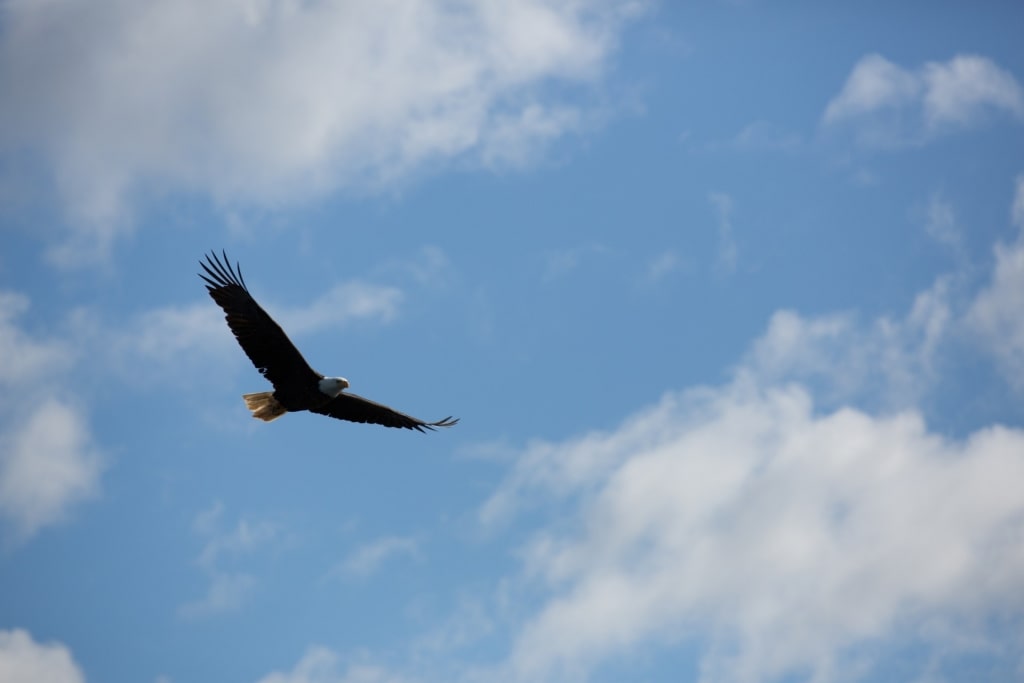
Bald Eagle
The majestic bald eagle is one of the most iconic sights that Alaska is known for. It’s not actually bald at all; the head is bright white, the hooked beak and legs yellow, and the body a glossy dark brown.
The wingspan of an adult female (which is larger than the male) is enormous, at seven and a half feet.
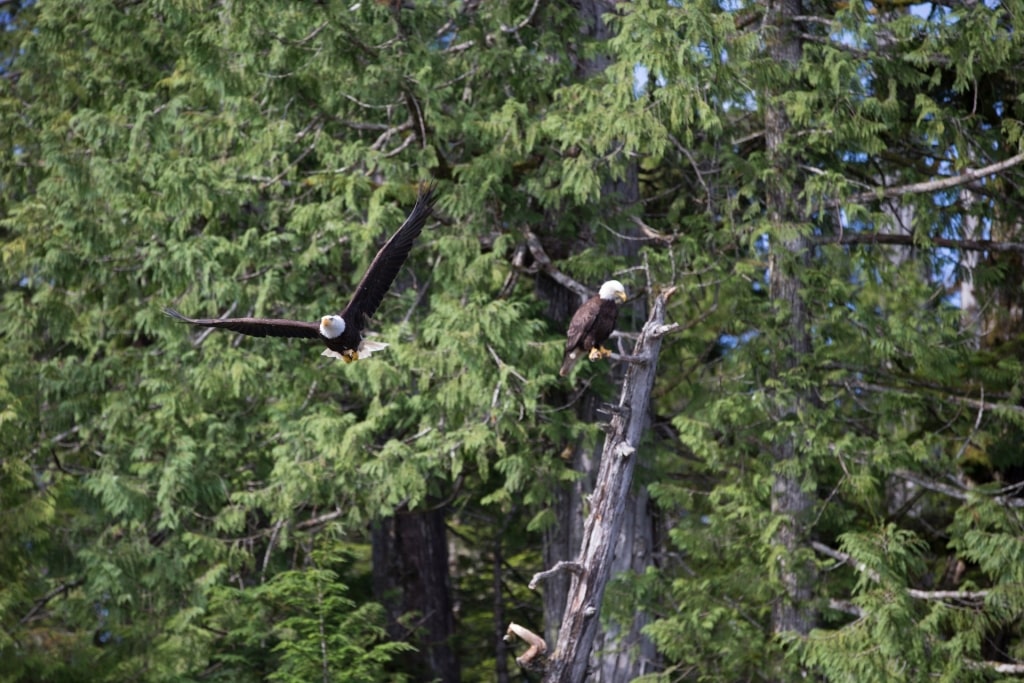
Bald Eagle
Bald eagles in Alaska are prolific; their population is estimated at 30,000. You could spot this wonderful bird perched in trees, on rocks, or on telegraph wires, scanning the ground for prey. They can even swim when hunting for fish.
In July and August, they may congregate around the salmon runs in places like Ketchikan and the Kenai River.
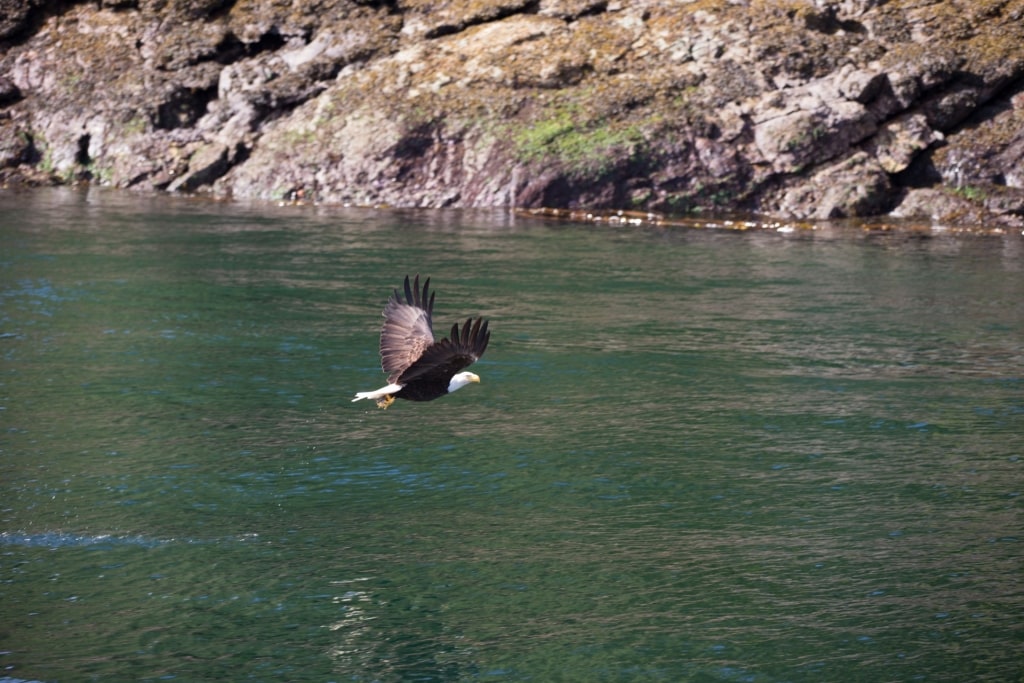
Bald Eagle
Visiting the Alaska Raptor Center is one of the best things to do in Sitka if you want to get closer to bald eagles and learn about their ecology and the issues they face.
Here, eagles and other birds of prey are rescued and rehabilitated until they can be released into the wild again; there’s even a space where they’re taught how to fly. The birds that wouldn’t survive in the wild are kept as permanent residents and can be viewed up close.
Read: Amazing Animals to See in Alaska
Willow Ptarmigan
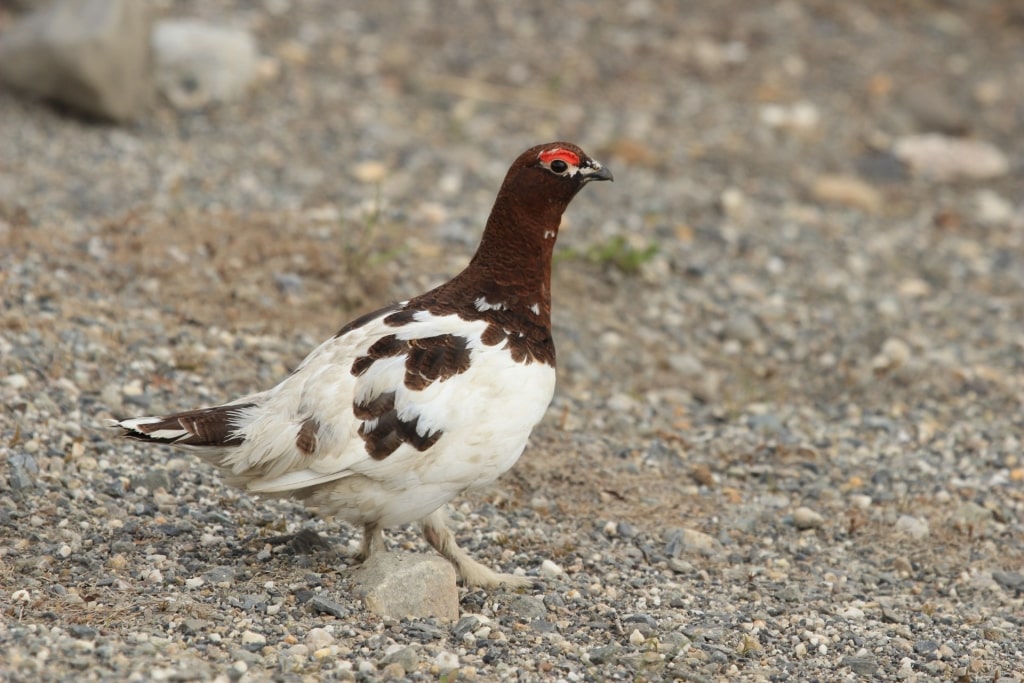
Willow Ptarmigan
The willow ptarmigan, Alaska’s state bird, is relatively common, and you’ll stand a good chance of spotting some in the vast wilderness of Denali National Park, as well as on the hiking trails around Juneau.
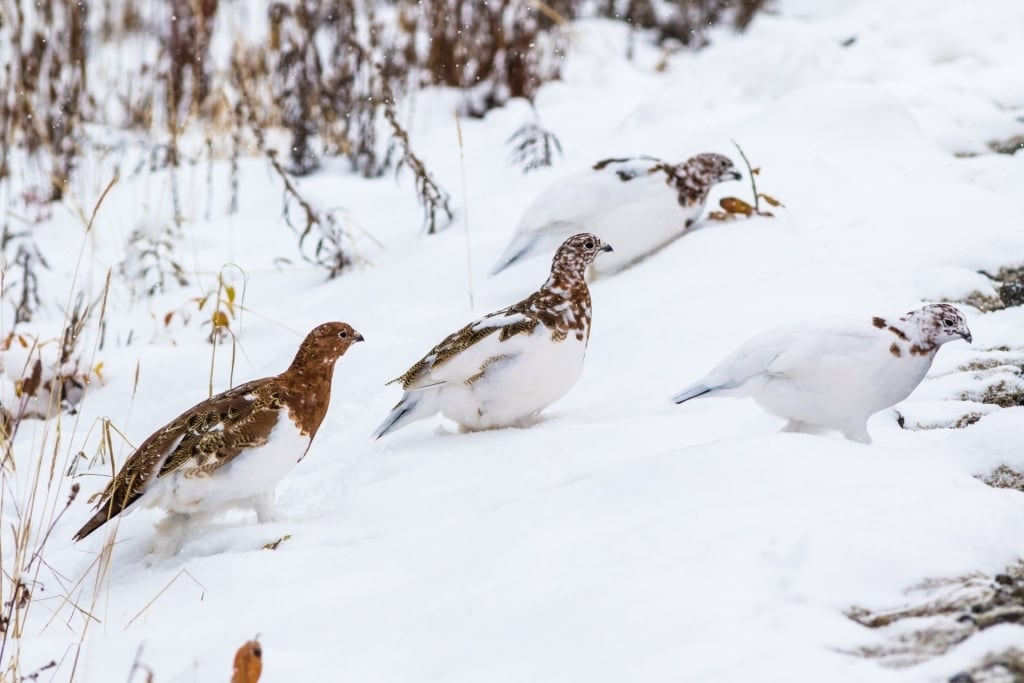
Willow Ptarmigan
The birds change plumage with the seasons to disguise against predators. They’re brown in summer and turn snowy white in winter. There are in-between stages, too; males develop a “cape” of chestnut-colored feathers at the beginning of May, their courting plumage.
By August, the males may take on a multi-colored appearance as the chestnut feathers are gradually replaced by white for the coming winter.
Common Loon
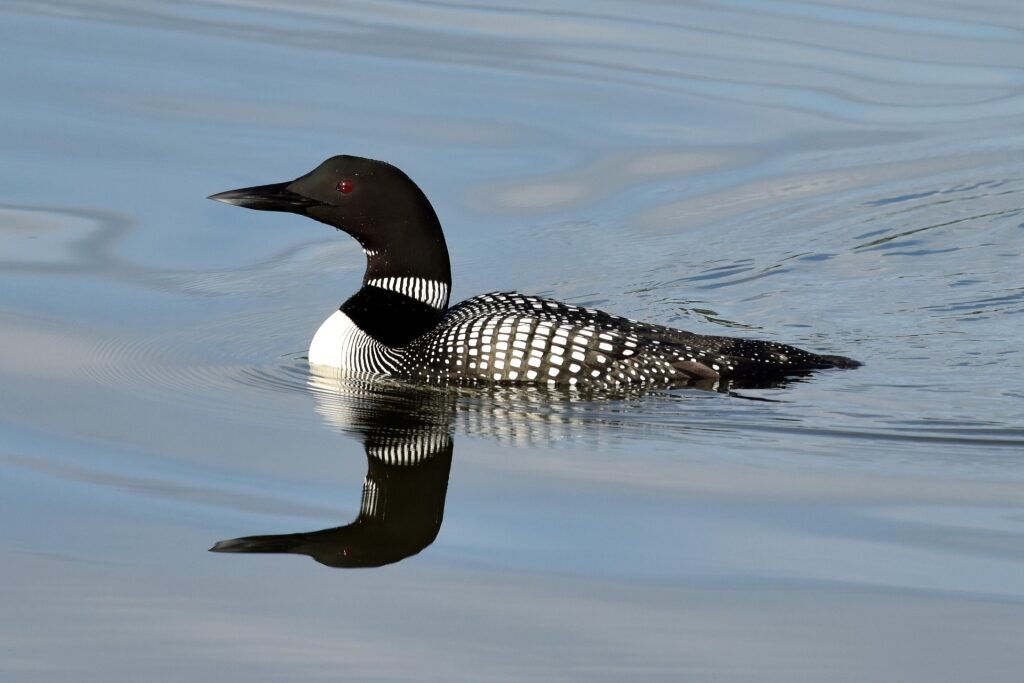
Common Loon
The common loon is an aquatic bird; it’s a highly efficient swimmer, although it’s somewhat clumsy on land. As such, loons spend their whole life on the water, apart from when incubating eggs on a nest.
Their young start swimming very early. They can dive just a couple of days after hatching, although you may see very small chicks riding on a parent’s back.
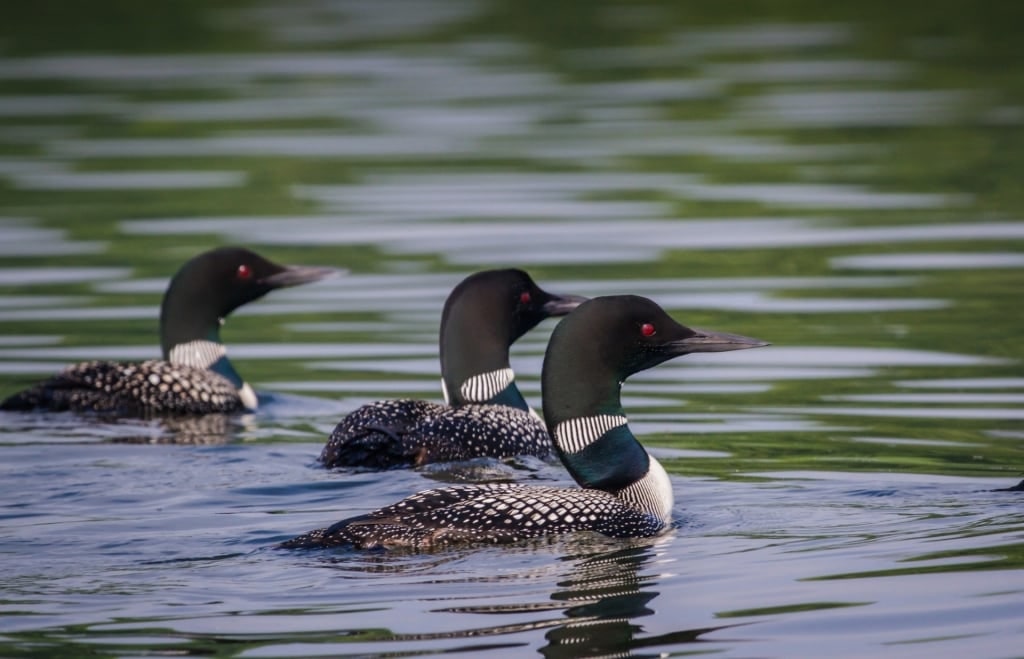
Common Loon
Loons are handsome birds; the summer plumage of the male consists of a black-and-white checkered pattern on the back, a glossy black head, and a black “necklace”. The eyes are bright red and the beak long and pointed, ideal for spearing fish, which the bird often consumes underwater during its dive.
You could spot common loons around Alaska’s lakes and ponds in summer. They are migratory and spend winter on the coast, avoiding the snow and ice. You might hear their haunting call, too, described as a yodeling sound.
Black-Capped Chickadee
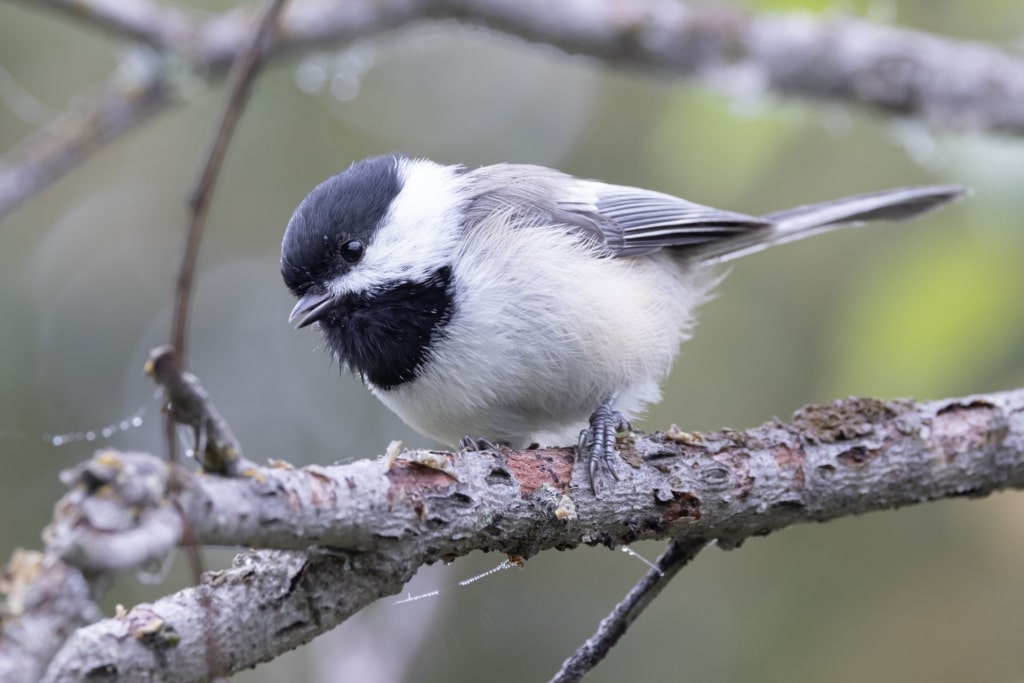
Black-Capped Chickadee
A perky, inquisitive little bird, the black-capped chickadee is distinguished by its black cap, as the name suggests, and a black bib. You’ll see them all over Alaska, in urban areas as well as forests. Listen out for their distinctive whistle; it’s as if the bird is calling, “Hey, sweetie”.
Chickadees are well adapted to Alaska’s cold winters, thanks to their dense plumage. They can pile on weight quickly for the colder months, and can also lower their body temperature at night to conserve energy.
Rufous Hummingbird
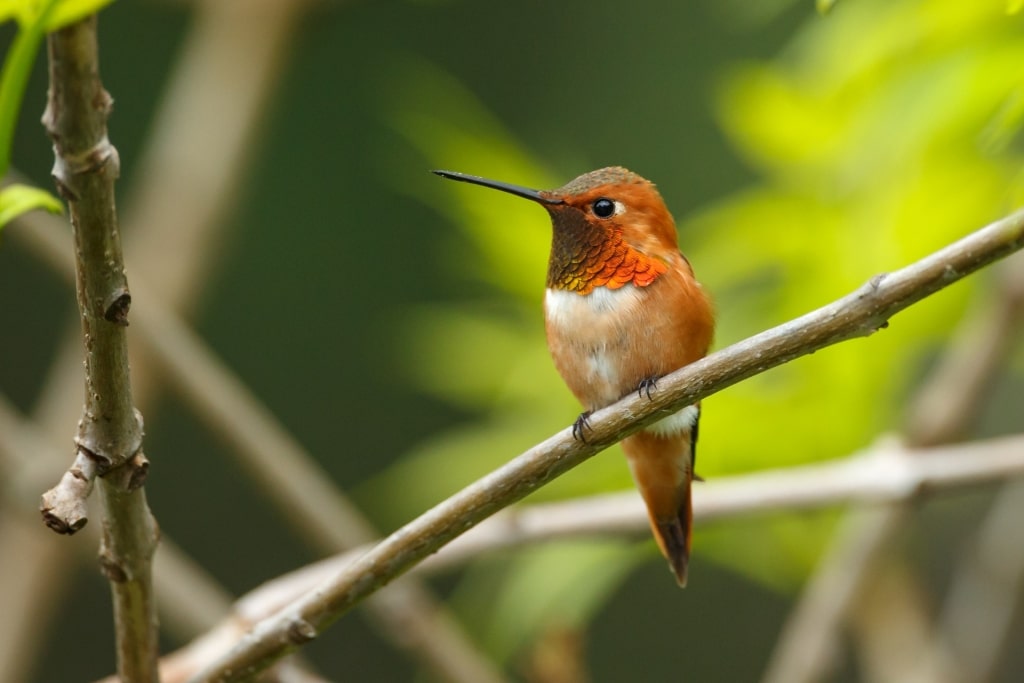
Rufous Hummingbird
The tiny rufous hummingbird is a bright, coppery orange, with an even more vibrant patch of orange on its chest and a white patch behind the eye. Males may have some shimmering green feathers on their backs, too.
Despite being so dainty looking, these hummingbirds are particularly aggressive and will attempt to drive other birds and even small mammals away from their feeding area.
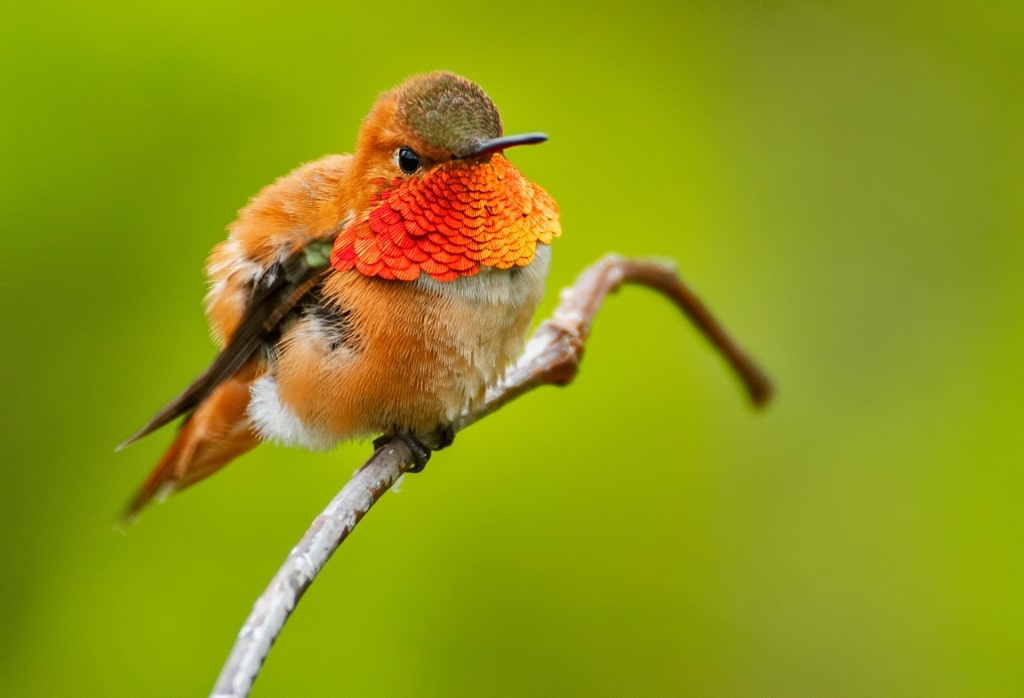
Rufous Hummingbird
Rufous hummingbirds are migratory, wintering in Mexico and flying north along the Pacific Coast in spring to breed. You’ll spot them in the southern reaches of Alaska, often in urban areas where locals have bird feeders in their backyards.
Tufted Puffin and Horned Puffin
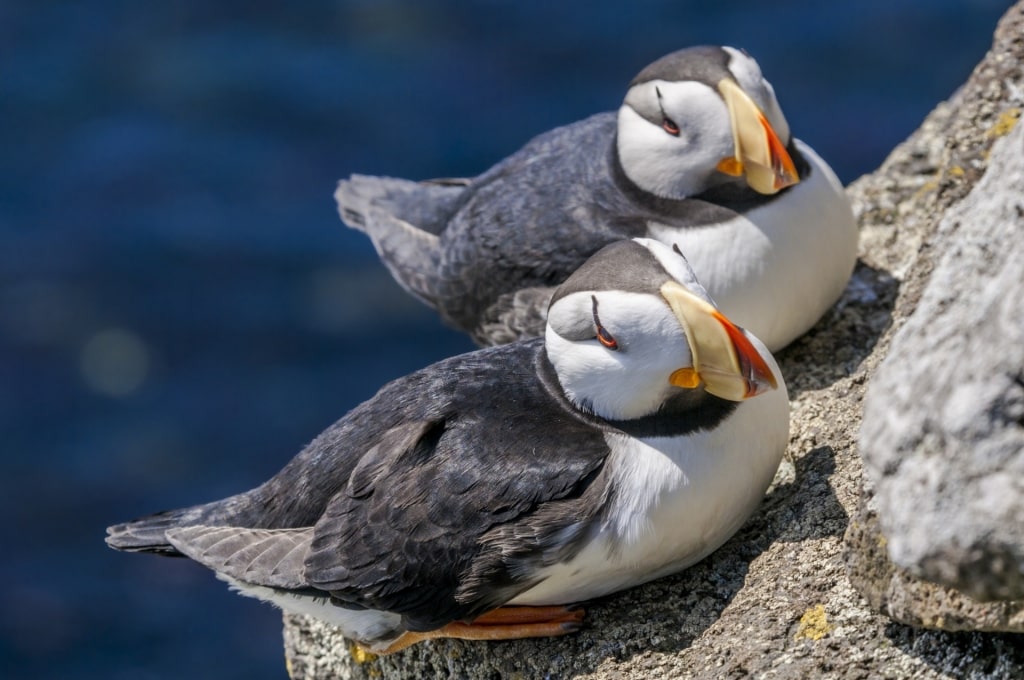
Horned Puffin
The puffin is one of the most enchanting birds of Alaska, with its colorful head and large, triangular beak.
The tufted puffin, which you could spot in the waters all along Alaska’s coast, has a longer beak than its rather glamorous cousin, the horned puffin, and is distinguished by the tuft at the back of its head, not unlike a mohawk. The horned puffin, on the other hand, has a fleshy, black “horn” shape above each eye.
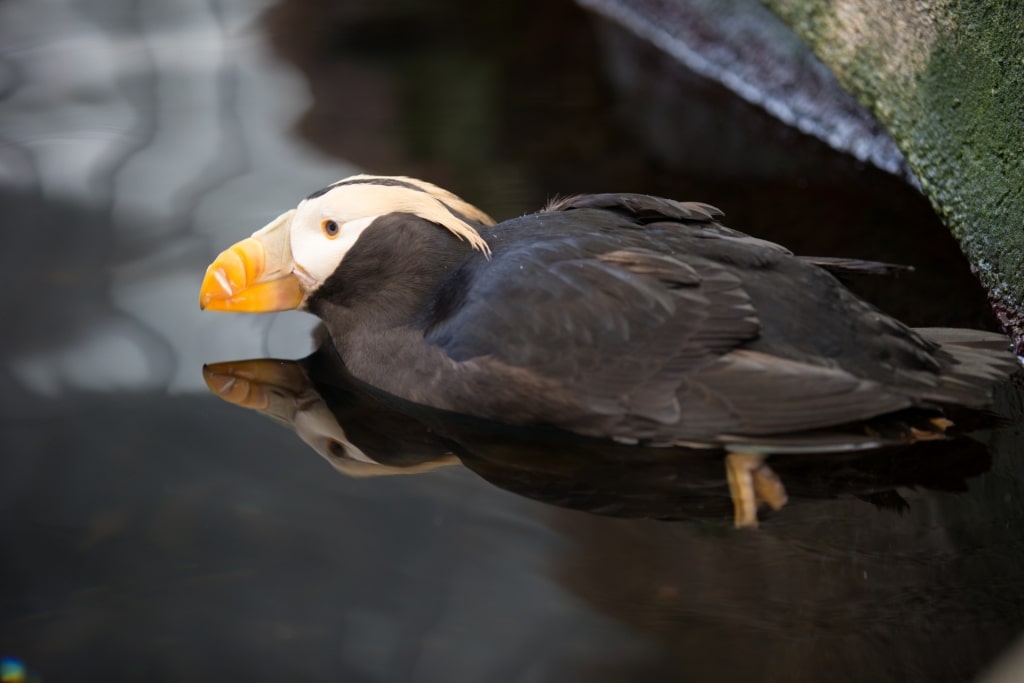
Tufted Puffin
Puffins are excellent swimmers, living on a diet of fish and plankton. You may spot one with a row of fish neatly stacked horizontally in its beak; this is a bird that’s gathering food for its young.
Otherwise, they nest in burrows on rocky cliffs, in large, mixed colonies. Take a boat trip in the Kenai Fjords National Park, which is one of the best places in Alaska to spot puffins and other seabirds.
Rhinoceros Auklet
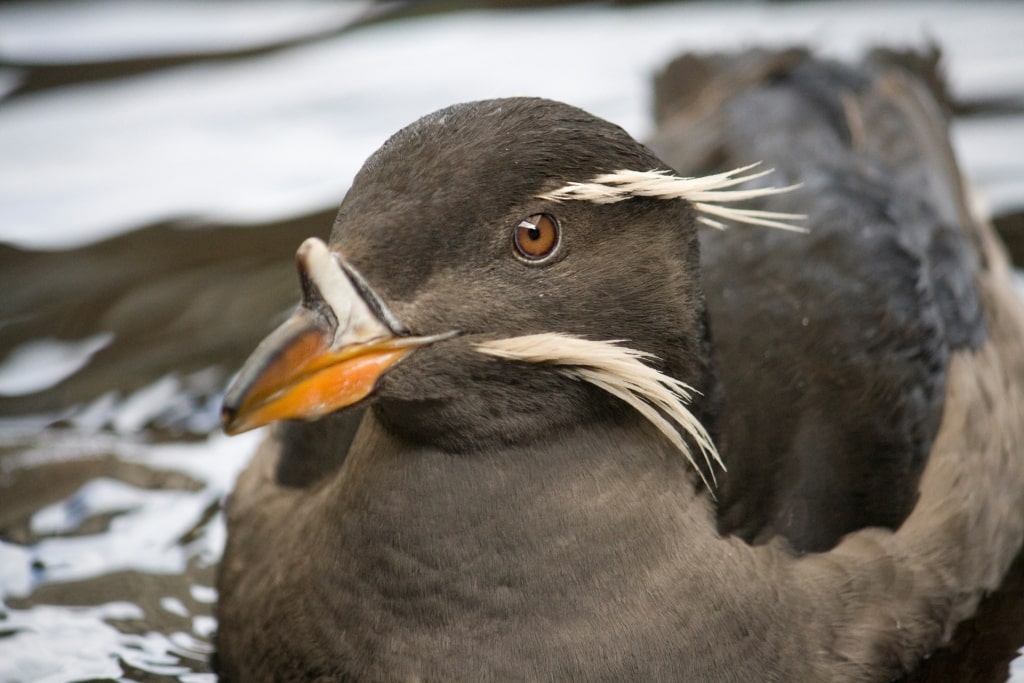
Rhinoceros Auklet
This unassuming little bird is related to the flashier-looking puffin. It’s gray-brown in color, with a bright orange bill that sports a white horn, like a tiny rhino horn.
Auklets nest on cliffs, digging burrows on grassy slopes with their claws and sharp beaks. Their diet consists of herring, sardine, other small fish, and crustaceans.
They’re impressive divers, able to reach depths of 300 feet. You can see them in the Inside Passage or further north on coastal cliffs and rocky islands.
Peregrine Falcon
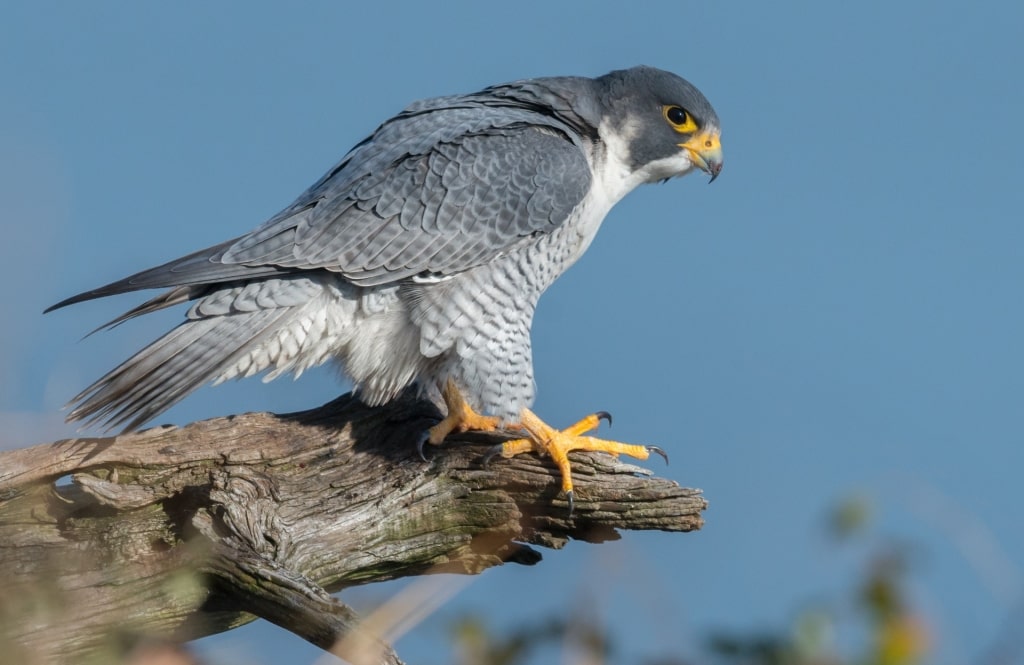
Peregrine Falcon
Peregrine falcons are one of the most valuable birds on Earth, thanks to their speed and grace—they can fly at up to 200 miles per hour, which makes them efficient and lethal hunters. They feed mainly on other birds and are even able to kill something as chunky as a duck.
These birds are kept as pets in the Middle East, where falconry is an ancient art, and can fetch hundreds of thousands of dollars apiece. In Alaska, they fly free, and you could spot them anywhere in the state, mainly in the mountains, along river valleys, and on the coast.
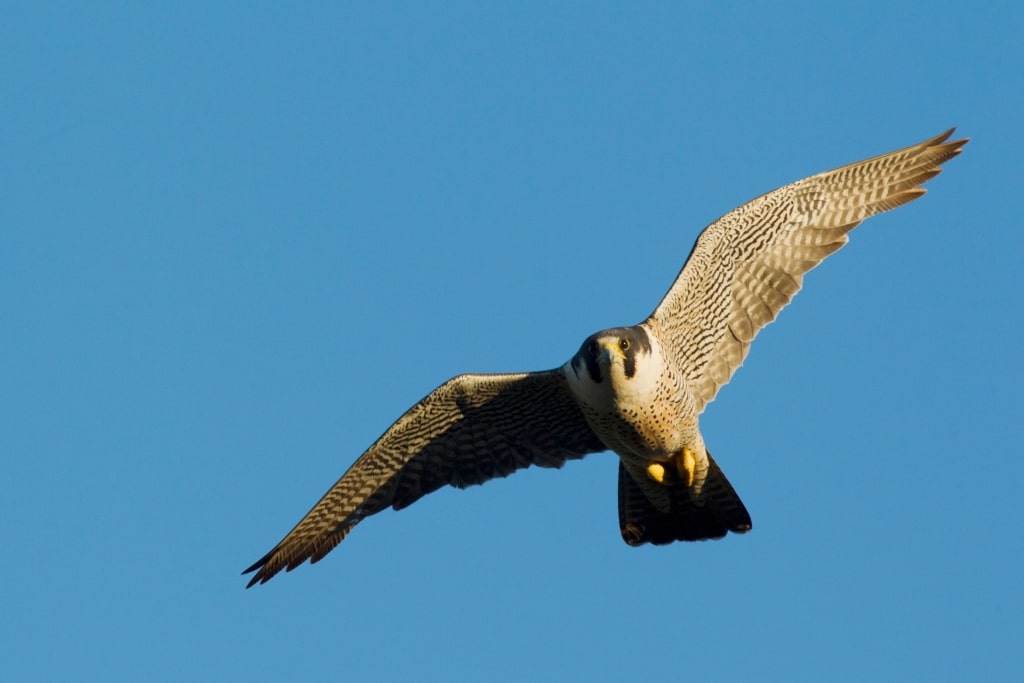
Peregrine Falcon
Peregrine falcons have an impressive migratory range; it’s not uncommon for individuals to fly from northern Alaska to Chile for winter, returning in the spring.
Great Gray Owl
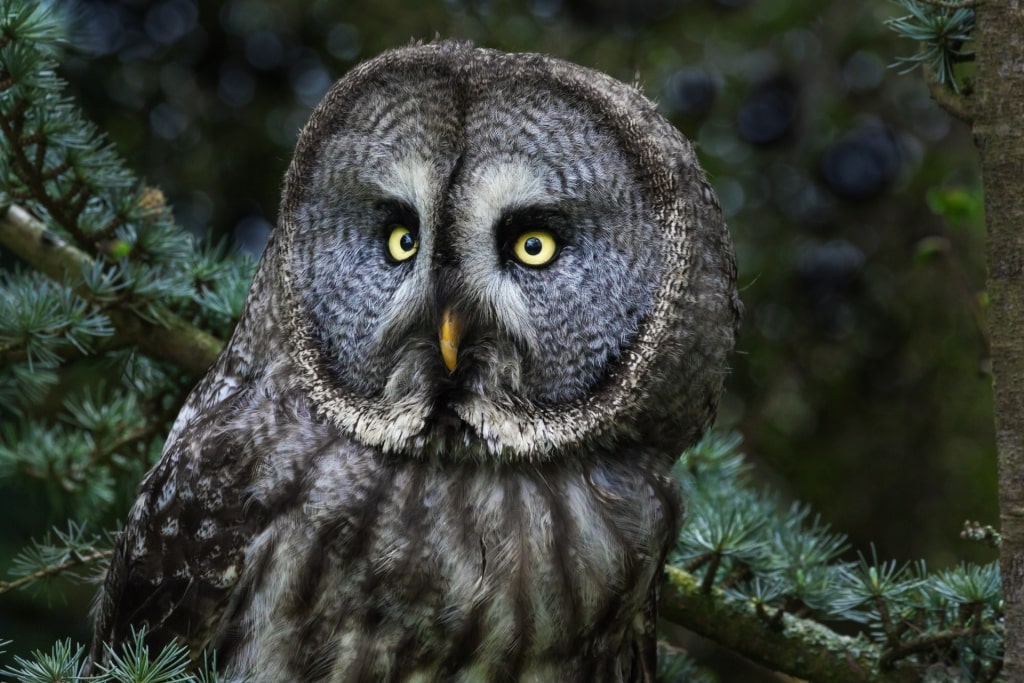
Great Gray Owl
The great gray owl is one of the most elusive Alaskan birds, hiding on the edge of the forests of northern Alaska.
Its range extends to the southeastern panhandle, so you could be lucky enough to spot one near the Alaskan towns of Seward, Homer, or Anchorage. Even if you can’t see an owl, you may hear its distinctive “hoo-hoo-hoo” call.
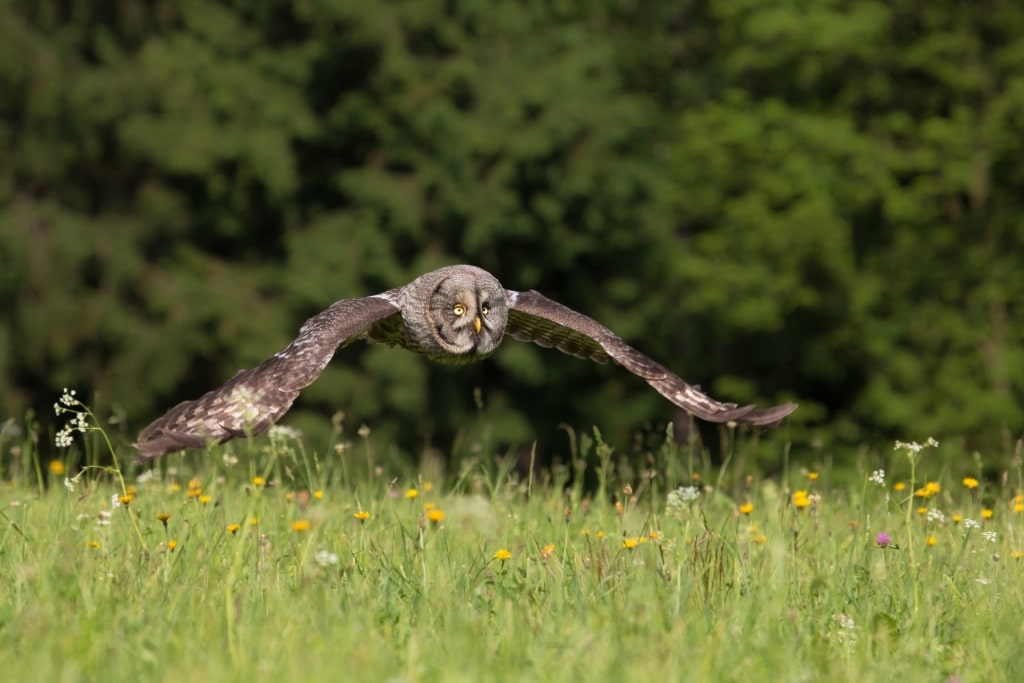
Great Gray Owl
The great gray is the biggest owl in Alaska, standing at up to two feet tall. However, they only weigh a couple of pounds, as most of what you see are feathers.
Owls hunt day and night; they have excellent night vision thanks to their huge eyes, as well as acute hearing. They prey mainly on small rodents.
American Robin
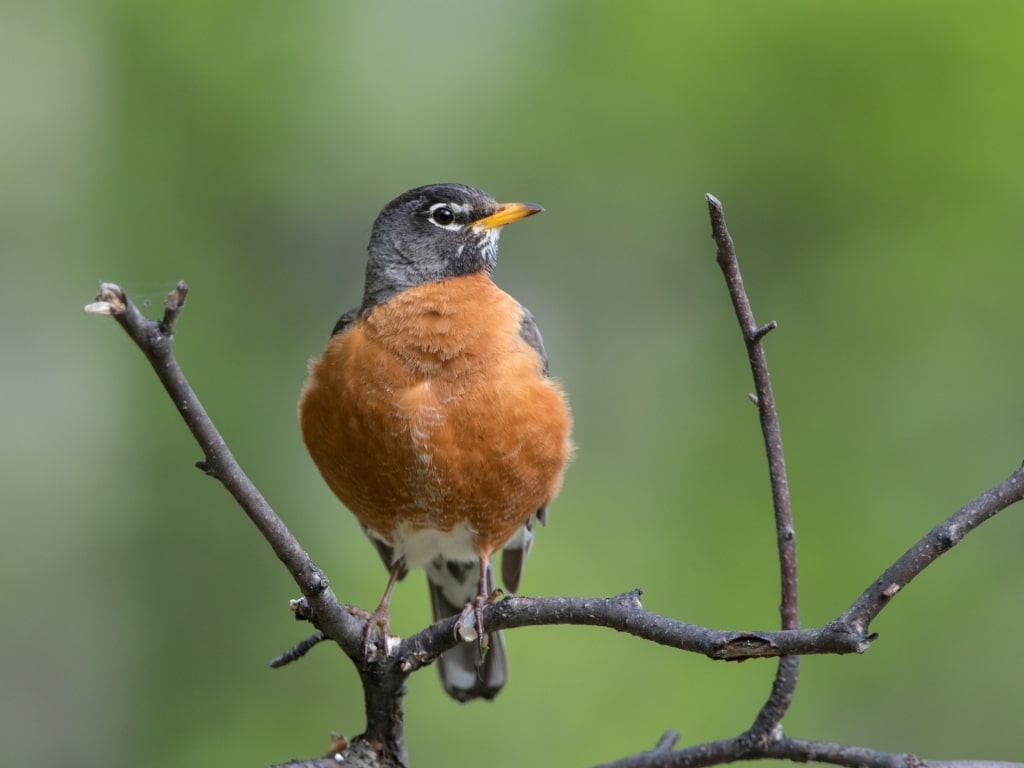
American Robin
A colorful bird with a black head and a bright orange breast, the American robin is mainly migratory. Its song is seen by locals in Alaska as the first sign of spring.
Robins nest in dark, coniferous forests but will congregate in large flocks, feasting on berries and flowers. Comically, they can get drunk if they eat too much fermented honeysuckle.
Look out for them around Icy Strait Point, one of the best birding spots in southern Alaska.
Downy Woodpecker
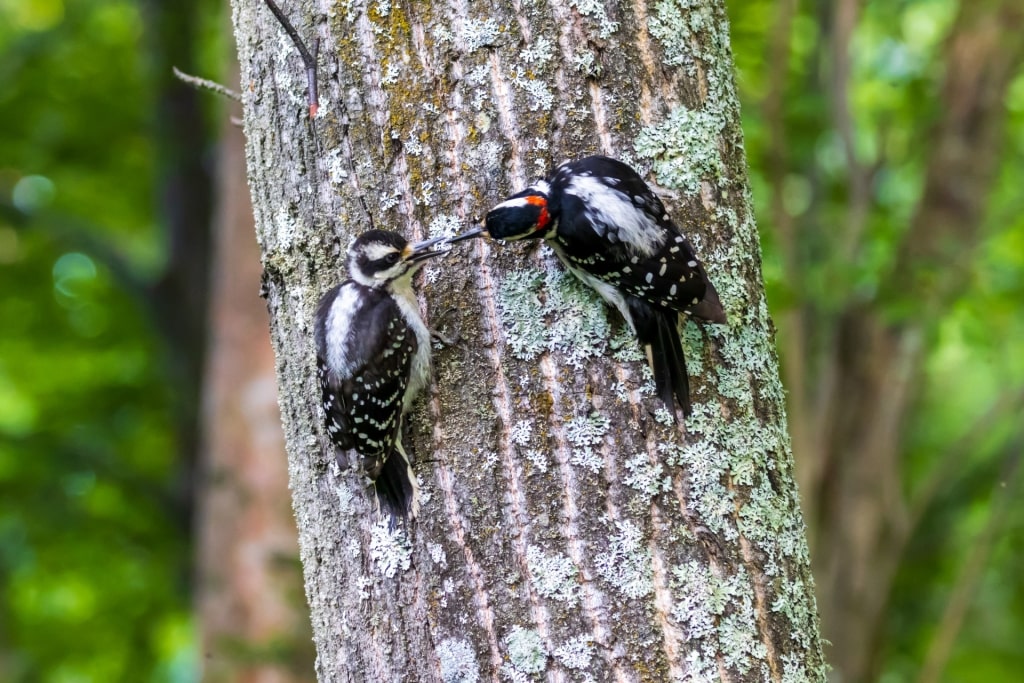
Downy Woodpecker
You’ll probably hear the downy woodpecker before you see it; this small, black-and-white bird favors deciduous trees and drums loudly on the bark with its beak. This drumming is territorial behavior, or a sign that the bird is looking for a mate.
Downy woodpeckers feed on insects, berries, and acorns. They’re common backyard birds, too, and you could easily spot them in parks and gardens in cities like Juneau or Skagway.
Trumpeter Swan
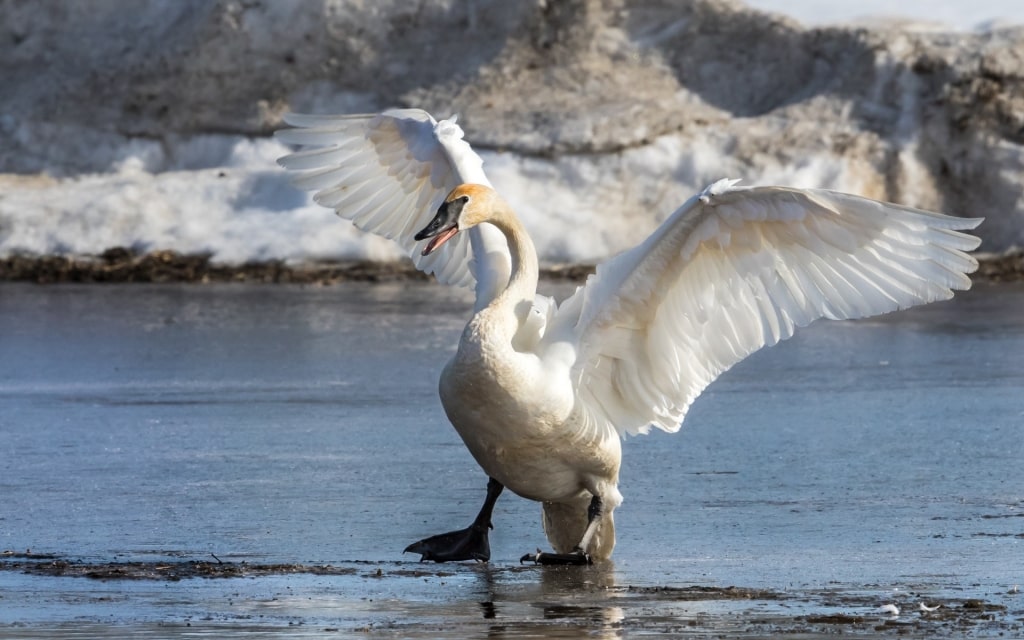
Trumpeter Swan
The graceful trumpeter swan, the largest water bird in North America, is pure white with a black face and bill. It was once close to extinction, as the feathers from its wings were popular as quill pens, but has now recovered, with a healthy population in Alaska.
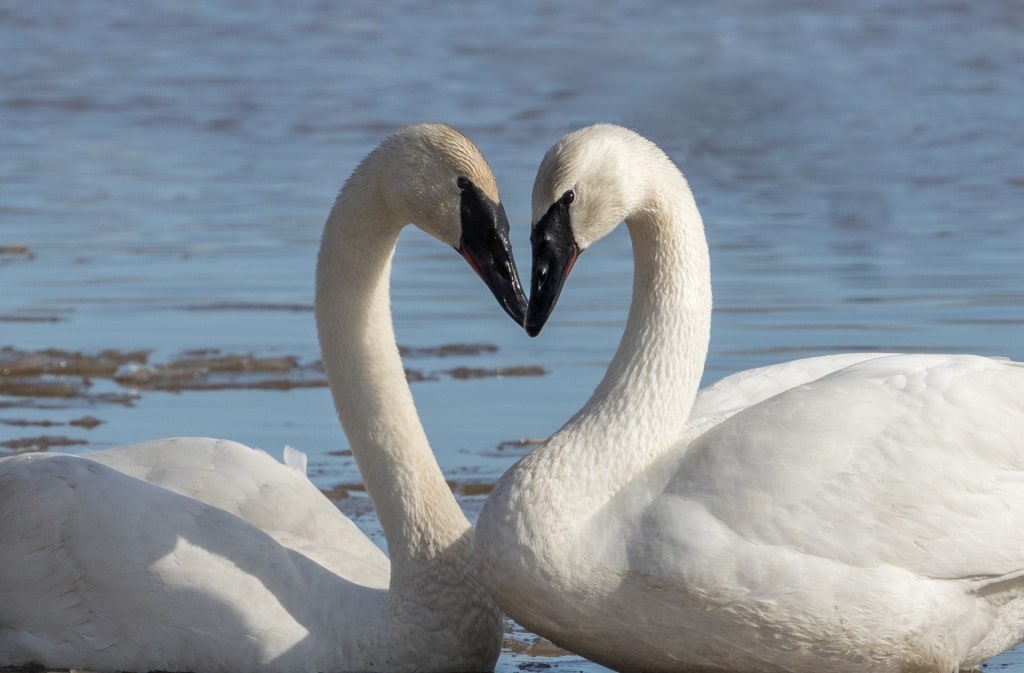
Trumpeter Swan
You’ll see trumpeter swans around lakes and marshes throughout Alaska. A large population of the birds winter further south, on Canada’s Vancouver Island, and can be seen if you visit early or late in the season.
Trumpeter swans mate for life and raise their young, called cygnets, together. While the female incubates the eggs, the male defends the nest.
Read: Best Time to Visit Alaska
Song Sparrow
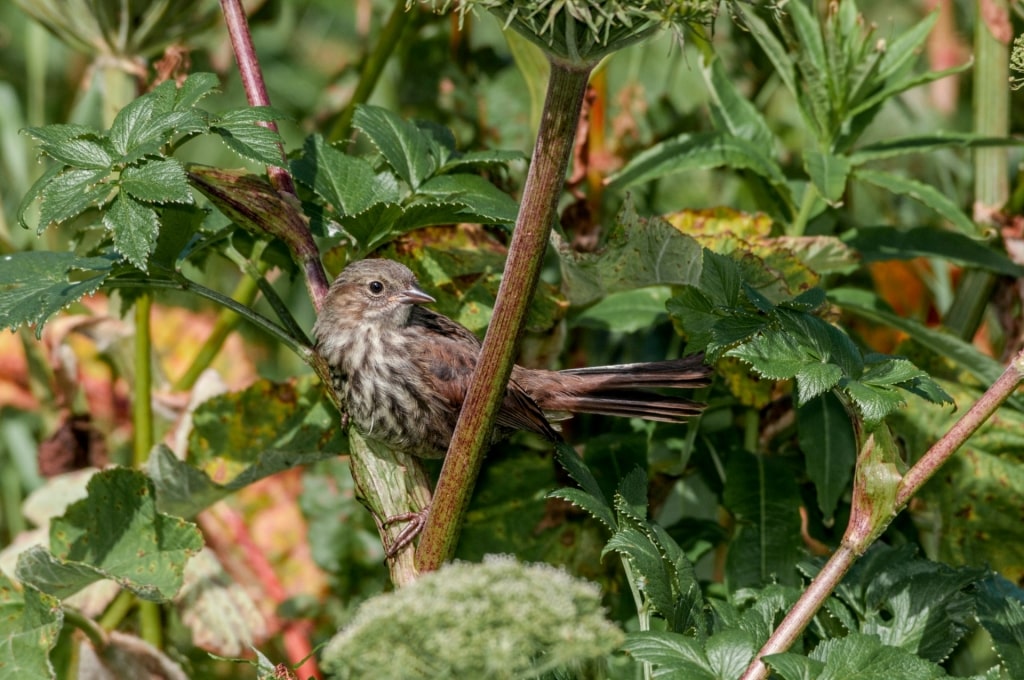
Song Sparrow
The fluffy, pint-sized song sparrow may not be the most colorful bird, but it has a distinctive and almost melodic chatter.
Song sparrows are common in Alaska, and you’ll spot them along the coastline, on beaches, and in marshes and brush. They build their nests on the ground, usually in clumps of grass.
You’re most likely to spot or hear song sparrows in southern Alaska, although their range does extend north to the Aleutian Islands, too.
King Eider
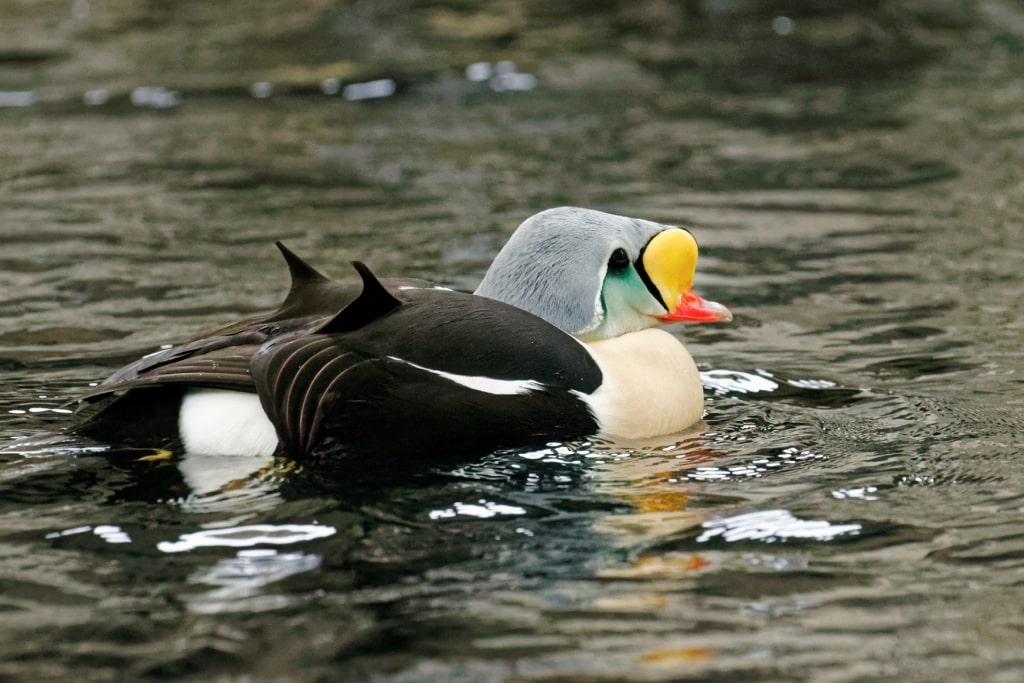
King Eider
The king eider is an exotic-looking duck, with a peachy pink breast and an elaborately patterned head, including a bright orange patch above its bill. Females are less spectacular, with brown plumage adorned with black bars.
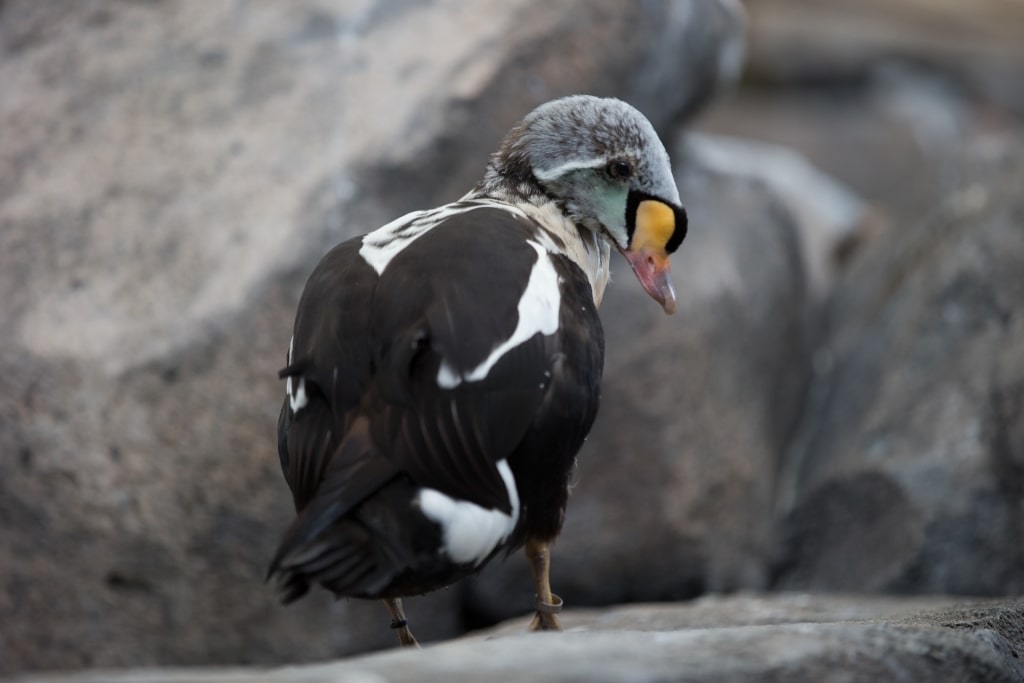
King Eider
Eider ducks breed on the tundra and tend to be found in the far north of Alaska, but you can see them in the wonderful Alaska SeaLife Center, which houses dozens of species native to the state. Visiting is one of the best things to do in Seward.
Steller’s Jay
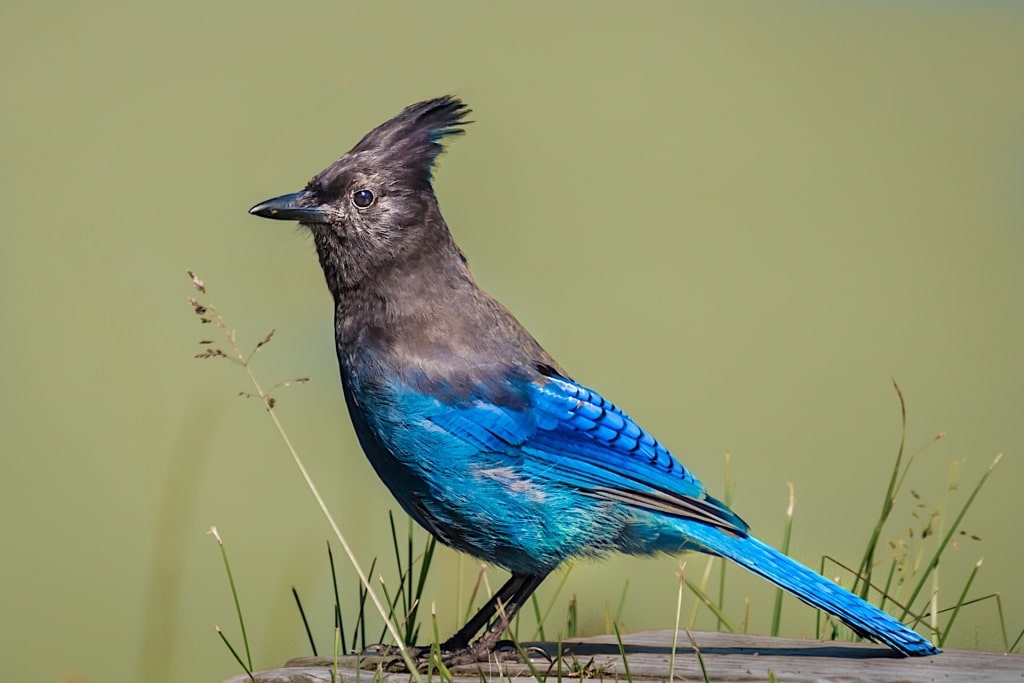
Steller’s Jay
The Steller’s jay is a handsome bird, its body bright blue and brown, with a brown crest on its head.
Jays are bold, inquisitive opportunists and will feed on whatever is left lying around, so you may well see them near population centers hopping around and foraging, or on the forest floor. Icy Strait Point is a particularly good place to spot them.
The Steller’s jay is an excellent mimic and can imitate anything, from other birds to squirrels and even dogs and cats.
Read: Expert Tips for Photographing Alaska
Dark-Eyed Junco
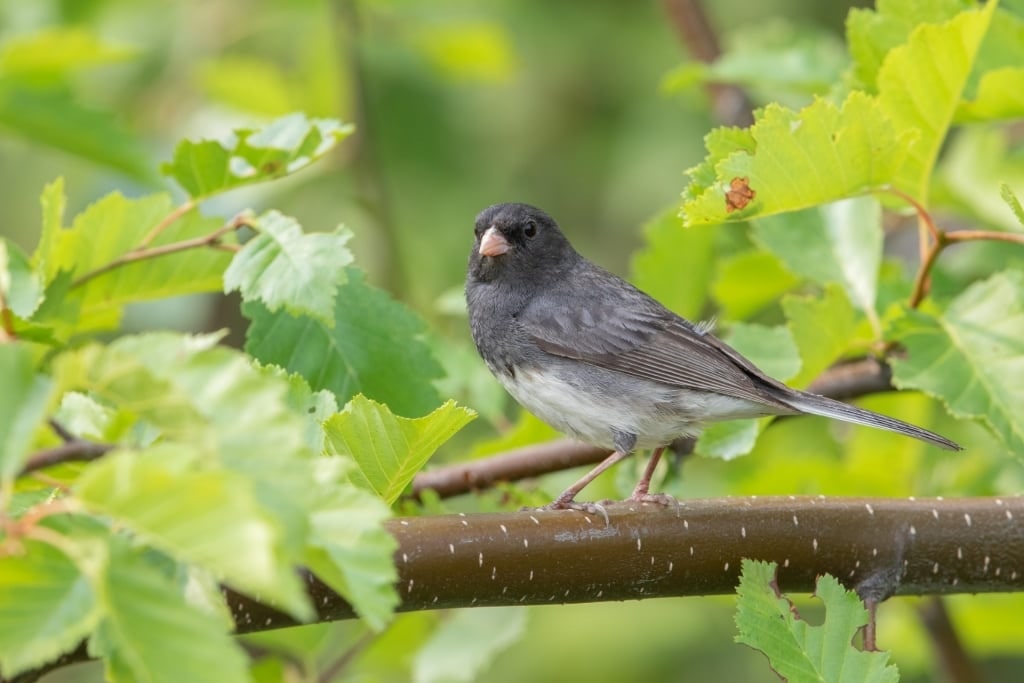
Dark-Eyed Junco
With dark brown eyes, a chic-looking black cap, and bright white tail feathers that are visible in flight, the dark-eyed junco is actually a type of sparrow.
These birds are very common in Alaska and you could spot them anywhere there are trees. They prefer mixed or coniferous forests and can sometimes be seen feeding on seeds on the forest floor.
Red-Winged Blackbird
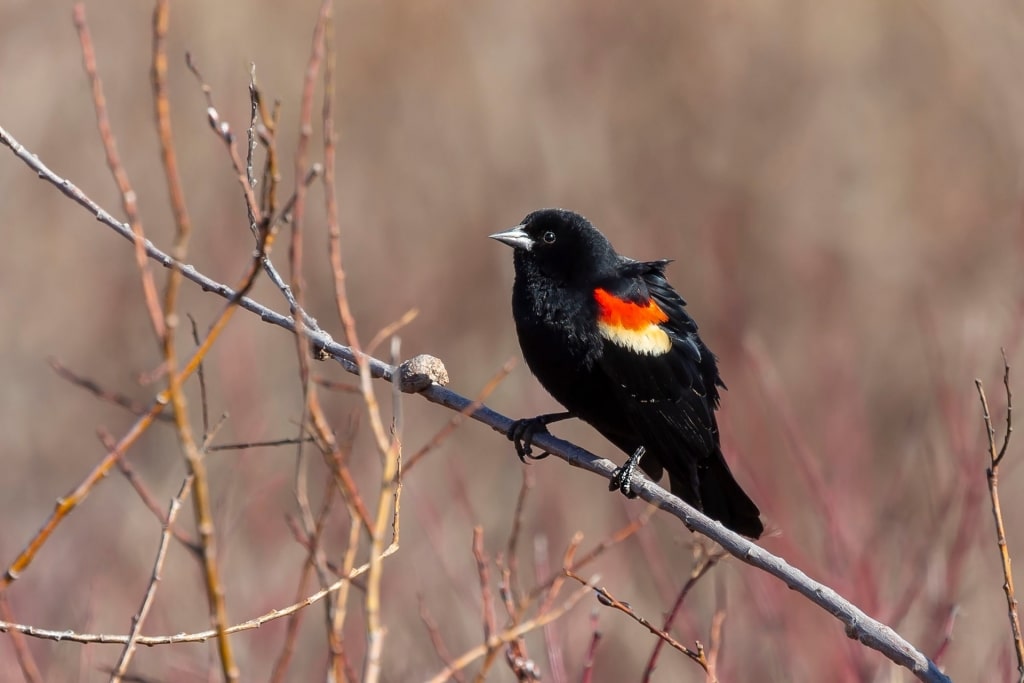
Red-Winged Blackbird
Red-winged blackbirds are territorial birds that will defend their nests with surprising aggression, even attacking humans who get too close. You can identify the males by their bright red wings, fringed with yellow and glossy black body plumage. Females are duller in color.
Red-winged blackbirds nest in marshy areas, although you could spot them in meadows and fields. They’re most common in the southeast of Alaska.
While these birds are found all over the USA, the individuals spending summer in Alaska may migrate to warmer climates in winter, away from the snow and ice.
Spruce Grouse
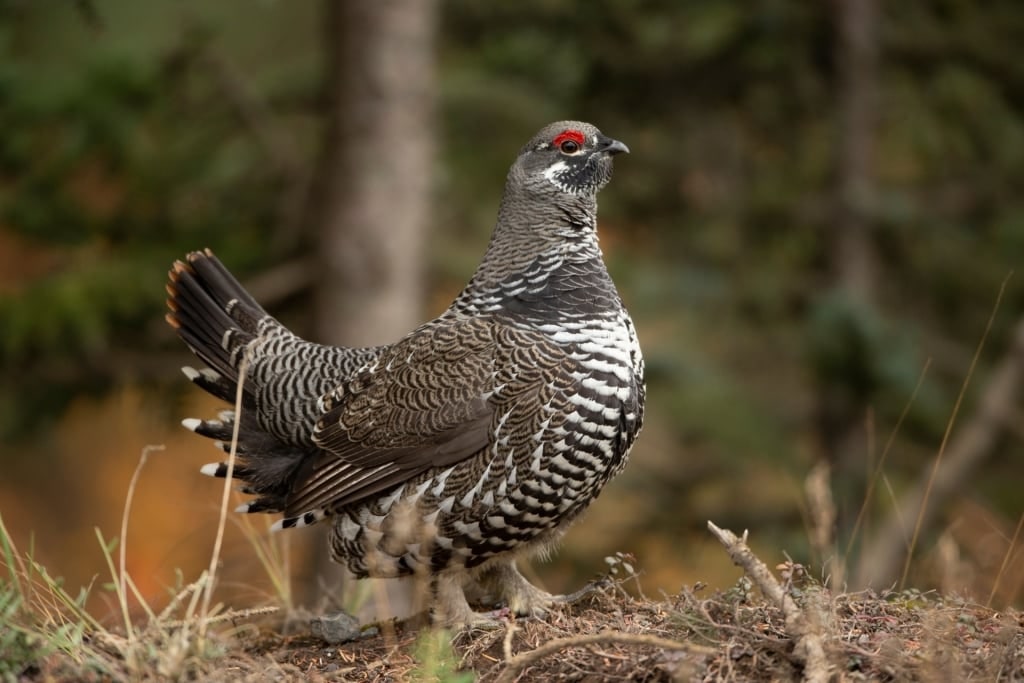
Spruce Grouse
This common grouse is somewhat unfairly known as a “stupid chicken”, or “fool’s hen” in Alaska, due to the fact that it will stay put rather than fly away when confronted by a predator.
It feeds on spruce needles in winter and green leaves, berries, and insects in summer. Spruce grouse can be spotted on the forest floor in the spruce and hemlock forests southwards from Glacier Bay National Park, as well as on the Kenai Peninsula.
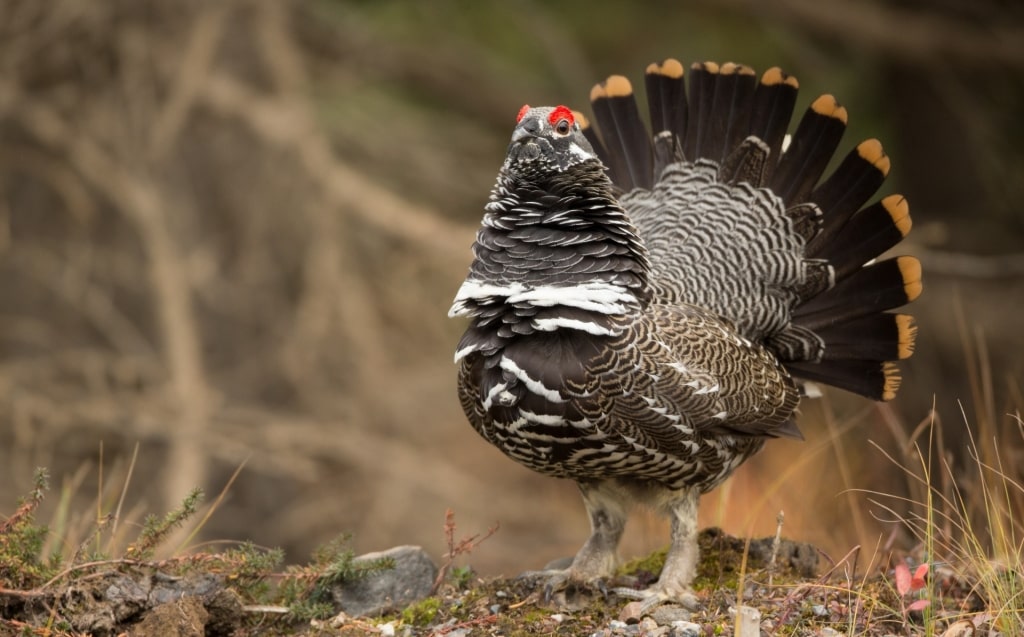
Spruce Grouse
If your travels bring you to Alaska in May, look out for the courtship behavior of the cock. Males will strut around with their tails fanned out, feathers ruffled, and wings down by their sides.
This progresses to dramatic aerial displays, dive-bombing from trees and settling on the ground, drumming the wings, creating a sound that’s audible from a couple hundred yards away.
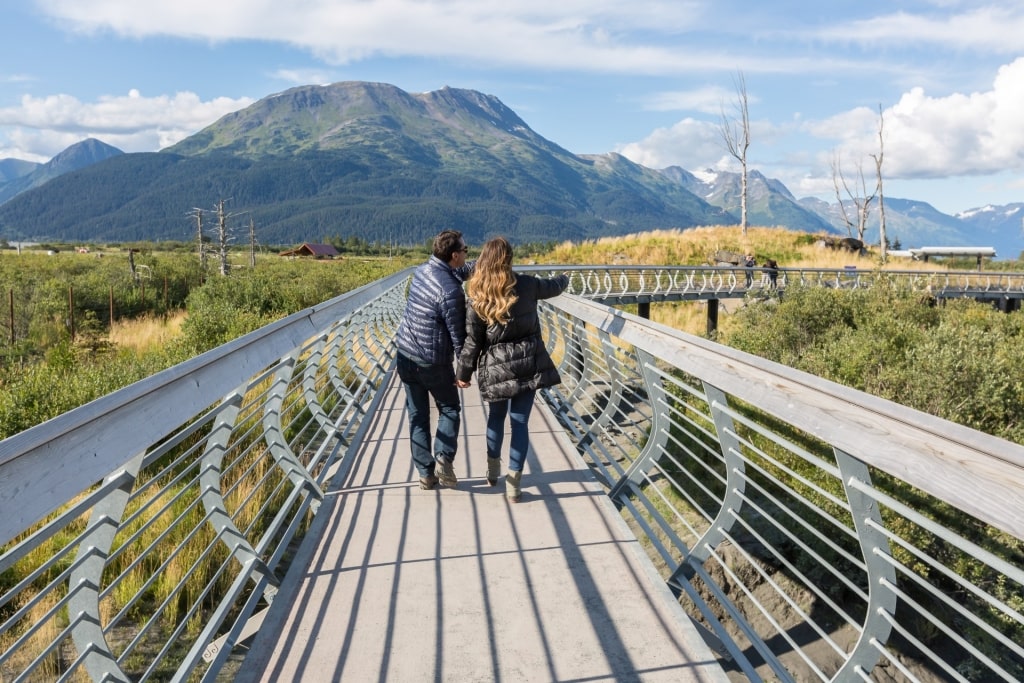
Seward
Ready to start spotting Alaska’s wonderful birds? Browse our Alaskan cruises and plan your next adventure with Celebrity.


